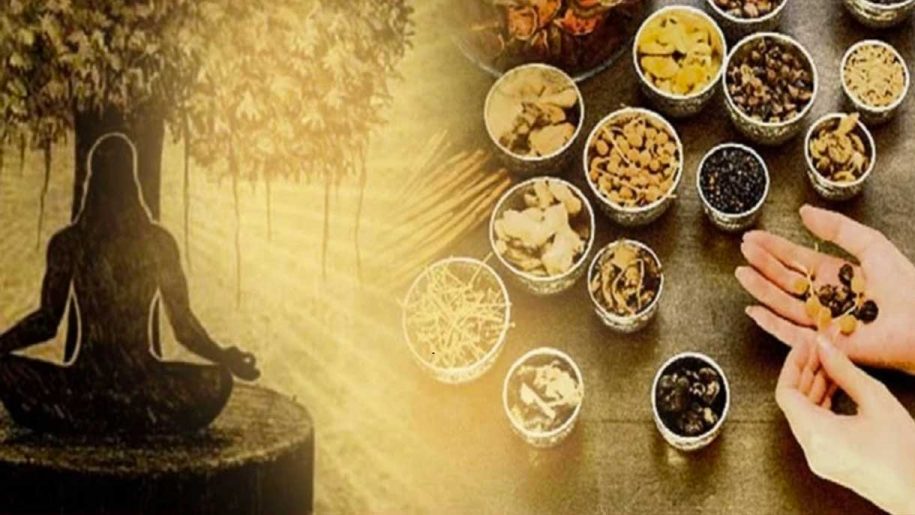Wellness with Yoga and Ayurveda in Modern Life
There are over 300 yoga centres and 100 Ayurveda centres in Rishikesh which has become the Yoga Capital of India. Yoga became popular here under the auspices of Swami Shivananda Saraswati who settled in Rishikesh in 1924 and practised and taught authentic spiritual and Yoga practices. Ayurveda and natural living were also promoted and practised by Swami Shivananda. There are many texts written by him on these subjects.
The origins of Ayurveda according to modern Ayurveda sources have been traced to around 6,000 BCE. Ayurveda and some of its concepts have existed since the times of Indus Valley Civilization.
The initial codified forms of Ayurveda as healing texts evolved from the Vedas and were further codified in the Charaka Samhita and Sushruta Samhita over 5000 years ago.
The wisdom of Yoga was codified in Yoga Sutras before 400 CE by Sage Patanjali. The Yoga Sūtras of Patañjali are a collection of 196 Sanskrit sutras (aphorisms) on the theory and practice of yoga.
The Yoga Sūtras of Patañjali were the most translated ancient Indian text in the medieval era, having been translated into about 40 Indian languages and 2 non-Indian languages.
There were no references to the types of Yoga or Ayurveda given in the ancient texts. The prefixes of both have come about in recent times. There is, however, a reference to Hatha Yoga in the Hatha Yoga Pradipika – a classic 15th century Sanskrit authoritative text on haṭha yoga, written by Svātmārāma.
The Hatha Yoga Pradipika is one of the three classic texts on haṭha yoga, alongside the Gheranda Samhita (late 17th-century text organized into 7 chapters and contains 351 shlokas or verses), and the Shiva Samhita (Sanskrit text that discusses yoga, the importance of a guru (teacher) to a student, various asanas, mudras and siddhis (powers) attainable by yoga and is one of the most revered surviving texts on hatha yoga.
Swami Sivananda taught the classical form of Yoga as dictated by the ancient texts of Yoga. Yoga for Swami Shivananda meant a change of lifestyle too. It was not just a system of asanas.
His famous mantra was
“Serve, love, give, purify, meditate, realise which is still chanted in Rishikesh and other parts of the globe today.”
The purpose of Yoga and Ayurveda is self-realisation aka samadhi and moksha. The practice of Ayurveda is to live a long, healthy and happy life to achieve moksha. Hence Yoga and Ayurveda work hand in hand.
Today many forms of Yoga and Ayurveda are being taught and practised to meet the needs and desires of the students. In other words, the original forms of Ayurveda and Yoga are being diluted.
In the words of a hatha yoga master and Ayurveda Vaidya
‘Most are propagating Yoga and Ayurveda but few are preserving it’
If we carry on at this rate, there will be nothing left of these valuable traditions. These traditions are imperative for a harmonious life, family, society and environment.
Traditionally, Ayurveda and Yoga were imparted in an individualized way from Guru to Disciple. There are indications and contraindications for all the practices of Yoga and Ayurveda.
When large groups are taught yoga in a non-individualised way, it can be harmful. The same applies to Ayurveda. It is not for the student to choose but for the Vaidya or teacher to choose what is appropriate or else these healing practices can do more harm than good.
The foundation of Yoga and Ayurveda are the same. These practices are essential for both Ayurveda and Yoga to have their desired effect.
These are the ten yamas and niyamas, the essential dos and don’ts of life. These are akin to most spiritual practices across the globe.
The yamas and niyamas originate from the Patanjali Yoga Sutras:
Yamas
- Ahimsa (non-harming or non-violence in thought, word and deed)
- Satya (truthfulness)
- Asteya (non-stealing)
- Brahmacharya (celibacy or ‘right use of energy’)
- Aparigraha (non-greed or non-hoarding)
Niyamas
- Saucha (cleanliness)
- Santosha (contentment)
- Tapas (discipline, austerity or ‘burning enthusiasm)
- Svadhyaya (the study of the self and the texts)
- Isvara Pranidhana (surrender to a higher being, or contemplation of a higher power)
Without the practice of the above, the deeper effects of Yoga Asana practice and Ayurveda will be minimal.
Let us root ourselves in the true traditions so that we can both preserve and propagate Yoga and Ayurveda in its original form. If this is not done, disharmony will prevail. When the sciences of Ayurveda and Yoga are practised in their authentic forms happiness and harmony for the planet will prevail. Furthermore, these sciences will remain intact for our future generations.


